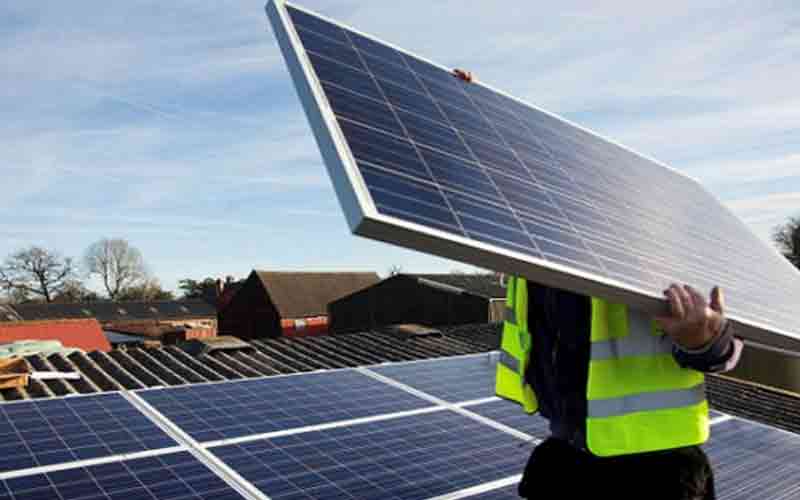Pakistan has emerged as the world’s largest importer of solar panels in 2024, bringing in 17GW worth of solar panels in 2024.
According to the Global Electricity Review 2025 by UK-based Ember, the country imported 17 gigawatts’ worth of solar panels—more than twice the amount from the previous year.
This grassroots transformation has been powered by households and businesses seeking relief from surging energy prices and persistent power outages.
“It marks a structural shift in how energy is perceived,” said Muhammad Mustafa Amjad from Renewables First, describing the solar boom as a “survival response” in a country increasingly priced out of its unreliable grid.
Most installations are off-grid or behind-the-meter, largely escaping official records and bypassing the strained national grid.
READ: Sindh govt to provide solar systems to 500,000 more homes
Blue rooftops are now a defining feature of major cities. “If you look at satellite images of any Pakistani city, all the roofs appear blue,” noted Ubaid Ullah, a Karachi-based energy expert.
Most installations are off-grid or behind-the-meter, meaning they operate independently of the national electricity network.
Follow us on our Official WhatsApp channel
Without major solar auctions or public funding, the transition remains market-led. But this has led to regulatory blind spots and risks of infrastructure instability, especially during evening peak hours when solar power wanes, but demand surges.
Experts also warn of a “utility death spiral,” where fewer consumers rely on the public grid, shrinking its revenue and weakening its long-term viability. Still, Pakistan’s example may offer valuable lessons to other Global South countries facing similar challenges.
Battery storage is expected to mirror solar’s growth pattern, accelerating Pakistan’s shift to a cleaner and more independent energy system.










